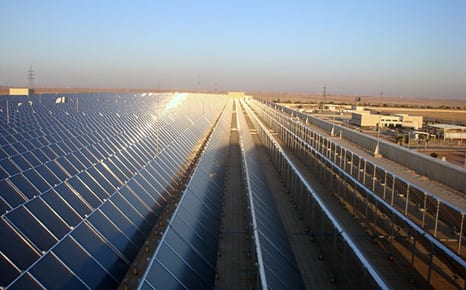We recently launched the Homegrown Power Plan which was unequivocal in its modelling and its findings. It is an audacious and truly timely intervention into the national debate on the future of our economy.
What exactly did it find? That it is not only feasible to gradually transition to a 100% renewable-powered Australia by 2030, but it is entirely doable. On powering our economy by 100% renewables by 2030, the findings are plain. The cost of inaction far outweighs the cost of action.
Its release was followed by pre-election policy announcements from both the ALP and the Australian Greens, the Greens came closest to recognising and supporting this agenda.
The ACT Government has just claimed pole position announcing their intention to legislate for 100% renewables by 2020. The announcement demonstrates that 100% renewable energy for electricity at the local, regional, and indeed national level is not only feasible, it is happening – now.
In Australia, 5 million people live under solar powered rooftops, the highest proportion (by a considerable margin) of any country on earth. These Australians know what the future looks like. They’ve invested their own money in the future and they’re waiting for Government to catch-up by implementing large scale renewables, modernising our grid and electrifying our transport. We lead the world in household solar uptake, but our ageing fleet of fossil fuel generators make our electricity system one of the dirtiest in the world.
Governments are taking the lead in other countries like China, the US and even India, but Australia is plagued by a history of politicisation of renewable and climate policies that is holding us back. So, again, it’s time for the people to lead.
The timing of the report was somewhat exquisite. It landed the day after our Prime Minister got his grip on the trigger for a double dissolution election of the Australian Federal
Parliament. And what was the trigger for you ask? To attend to the jobs crisis brought about by the stagnation and passing of our manufacturing sector? The displacement of a generation of our workers in the coal industry, whose jobs are falling away to never return, as the communities they belong to fester and spoil under this looming structural decline?
You could be forgiven for thinking that this moment in our national politics, the rare calling of a double dissolution election, was in response to the intertwined and insidious coming together of these issues, but tragically it wasn’t.
There is nothing technological preventing us from doing exactly what the Homegrown Power Plan provides the roadmap to do. It is politics, political will and the failure of our political class to realise that the world has changed, will keep on changing – quickly – and that the longer we delay the more damage we do. To our economy, our beloved natural wonders, our standing in the world, and to our kids and theirs too.
When I meet with politicians on behalf of millions of Australians who have solar on their homes, calling for our representatives to stop the policy uncertainty, take the plunge and do what the overwhelming number of their constituents know makes absolute sense, I am told we have to talk about the real world, get our heads out of the clouds. Well ladies and gentlemen this is the real world, and as every day passes the view is becoming clearer.
China, the largest economy on the planet, has successfully decoupled its economic growth from emissions intensity. More money is being invested in renewables than in fossil fuel sources than ever before.
India is planning the transformation of the entire Indian electricity system with 175GW of renewable energy installs by 2021/22. This involves lifting solar installs tenfold to 10GWa and doubling of wind installs to 6GW. That is the real world.
The coal industry is dying – the bankruptcy of Peabody Energy was the 50th coal company to go bankrupt since 2012. This is the real world. Without a plan for an orderly transition, there will be untold harm done to thousands of Australian workers and communities who stand to lose the most if the market is left to clean up the mess that comes with shockwave after shockwave that hits our economy.
The Chairman of Shenhua Watermark, the people made famous in this country by their involvement in a project to mine on our Liverpool Plains, was unequivocal to his shareholders saying, “the pace of adjustments to the global energy structure in the short run will speed up…structural adjustments to the coal and electricity sectors will accelerate.” In February, China State Grid’s Chairman Liu Zhenya said that the only hurdle to overcome is “mindset,” and that “there’s no technical challenge at all.”
Australia is the sunniest continent on the planet and failure to rapidly embrace a transition to clean, renewable power in this country is not only poor policy, it is a threat to the future sustainability of our national economy.
In the real world we have the plan, we have the knowhow, we have the urgency, the need, overwhelming public support and close on eight weeks until a Federal election. It’s an ideal time to remember that political will is a renewable resource.
Solar Citizens is an independent, community-based organisation bringing together millions of solar owners and supporters to grow and protect solar in Australia. Together, we take action to protect the rights of millions of Australians with solar to cut bills, create clean power and take energy generation back into our own hands.










